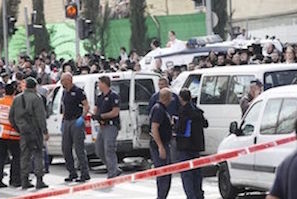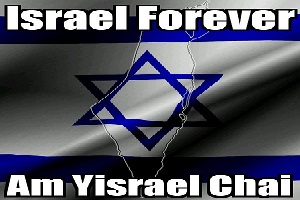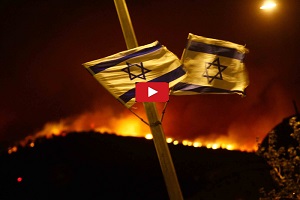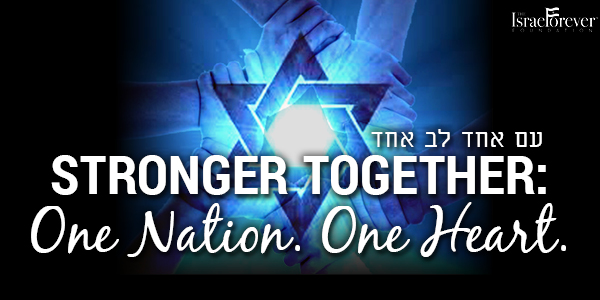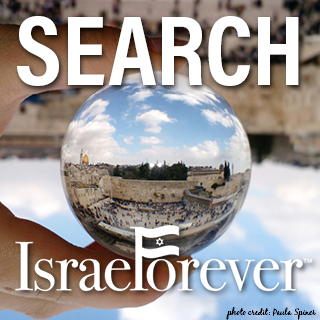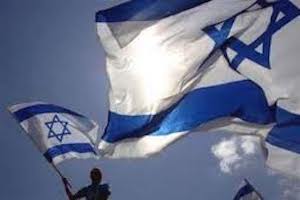What I learned From My Mistaken Right Turn
by Peter Himmelman
A couple months ago there’d been some talk in the Himmelman household about postponing a family trip to Israel. Knife attacks; car-rammings, and random shootings were nearly compelling enough to stop us. In the end, we wound up going, five out of the six of us anyway.

Citron Jumpy
I rented a big Citroen van, more like a small truck really, called a Jumpy. The Jumpy’s a Mideast and Europe only vehicle, a clumsy little beast with a six-speed manual transmission and teeny motor. That said, I grew to love the car. I drove it in the desert, in the hills and cramped alleyways of Jerusalem, and up and down the flat coastal plains near the Mediterranean.
My oldest son, Isaac is an avid reader and I’d heard him say from the back of the Jumpy, more than once, “I read that you’re not supposed to use WAZE (the driving direction app) in Israel because it’s been known to take people into some dangerous areas.” It’s not like I didn’t hear Isaac, but because I was doing other things, like figuring out how to back the Jumpy up a steep and rain-slick hill, without destroying a smoking clutch, I wasn’t exactly listening to him.
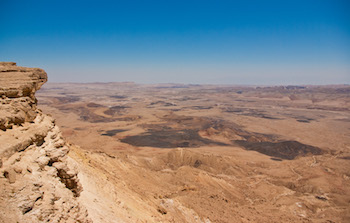
Views of Makhtesh Ramon from Mitzpe Ramon
On our way back from the desert town of Mitzpe Ramon, home to the unrivaled beauty of the world’s largest erosion crater, I sought the safest route back to Jerusalem. That meant that in no way did I wish to go through the West Bank, especially not during what some have called the Knife Intifada, not with most of my family with me, and not in the Jumpy, which for all practical purposes screams: ‘American Jewish tourists onboard!’
Having been in Israel several times I know my way around quite well, but tooling up Route 40 in the waning daylight, and coming into the ancient – and now modern – town of Beersheba, I decided it was best to be prudent and check WAZE to make absolutely sure I knew where I was headed. WAZE tells me I need to turn off Route 40 and go right. I hesitate at first, but bowing to the strength of its excellent Israeli-designed technology, I take the turn. As the sky darkens we pass through the industrial section of Beersheba for about twenty minutes until WAZE instructs me to turn right yet again. This time I’m even more hesitant because the sign at the roundabout tells us that we’re heading toward a village with the distinctly Arabic sounding name, Hura.

But now the sky is black and overcast, we’ve gone too far to turn around, and almighty WAZE has spoken. My own sense of volition and Isaac’s warnings are now just dim voices in the recesses of my mind. The signs on the side of this narrow and dark road point to towns with which I am totally unfamiliar, towns like: Laqiya, Shim’a, Samu’a, Yata, Al Fawar, and Al Tawani. What I am familiar with, (too familiar with,) are the many terror attacks that have happened on this very road, including the recent cold-blooded murder of the 19 year-old American student, Ezra Schwartz.
An American Jew such as I am, driving on this road, instinctively looks for the yellow and black license plates of Israeli citizens, ones that most likely belong to Jewish settlers who live in their scattered enclaves, walled away from hostile Arabs. To us the yellow and black plates are some small symbol that says, ‘this driver is of my tribe and not the other.’ We count them at first, then we search for them, and soon there are none. The other license plates, the white ones with green lettering, belong to the aforementioned other tribe, which if the news reports are correct; seems desperately to want me and my family to die. As I grip the steering wheel of the Jumpy I am not as nervous as I am focused, focused on getting us out of here as quickly as possible and back to the ‘relative safety’ of Jerusalem.
I breathe slowly now. I see things and feel things I never knew before, things I couldn’t have known or felt, even as a voracious reader of the Israeli/Palestinian conflict. What I see are highly populated Arab towns, each with one or more minaret depending on their size, lit up in green and purple and rising into the night. What I see is a flood of people returning home from work. What I see are Jewish settlements, fortresses tucked away and hidden from the road.
What I feel is a kind of sadness for the enormity, the complexity, and the seeming intractability of a problem, which is in itself, almost a denial of a basic principle of physics; that two objects (or in this case, two peoples) cannot share the same space. And yet, in defiance of this principle they do.
There is no peace in this ‘sharing,’ there is no progress, and there are no easy solutions. Neither people seem likely to leave. It’s been said that this conflict has two combatants; each has his hand on the other’s neck. Whoever lets go first is going to be strangled; and so neither does, neither can.
The Jumpy takes us back to Jerusalem in the rain, to our Airbnb in the German Colony. The five of us sit around the table, drinking cups of tea to ward of the chill, and we talk about what we’ve seen, what we feel, and what we learned from our mistaken right turn.
I learned that I love Israel now more than I ever have. I love the creativity of its people, their warmth, their exuberance, their breathless pace, the intensity with which their lives are lived; an intensity that’s given impetus by the fact that tomorrow isn’t a certainty, and knowing that, that life in all forms is precious. This is a truth, which should be self-evident, but in the comfort of my hometown of Santa Monica for example, it’s much harder to keep in mind.
I also learned that the Arab cab driver that took us to the Souk near the Old City the next morning knows about life’s preciousness as well, and I believe that this conflict makes him sad, as it does me. Not only because the normally high tourism season is so depressed this year and that he has far fewer people willing to pay a fare, but that this intractable problem just seems to hang forever in the Jerusalem air.
When my family got out of his cab, he and I exchanged glances briefly; we shook hands, I said Salam, he said shalom.
Let it be so.
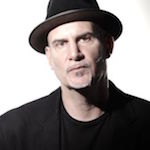
Peter Himmelman is a Grammy and Emmy nominated songwriter. composer, stage performer, visual artist, author, and lecturer. His forthcoming book. Let Me Out (A practical guide for bringing your ideas to life) is slated for release in fall of 2016 on Penguin/Perigee books. Over the last several years his company, Big Muse has earned accolades in both the corporate world as well as in academia for its pioneering work in creativity.

